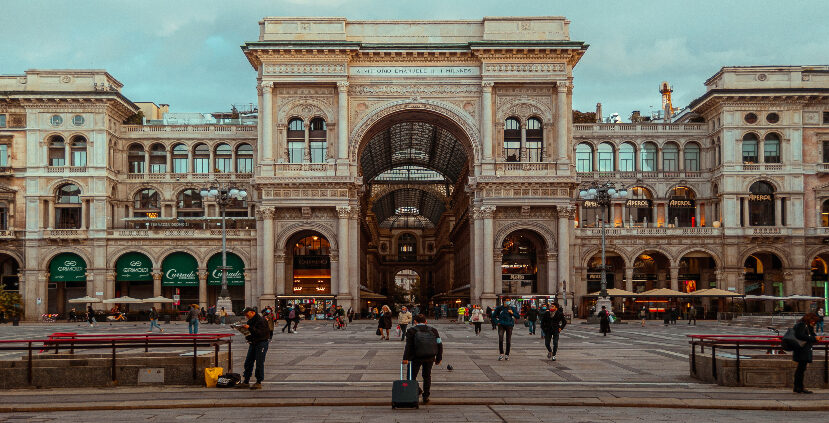
While Rome might be the capital of Italy, Milan in the northern region of the country is a destination that exudes sophistication and perhaps even rivals Rome. The metropolis is one of the world’s fashion capitals since, twice a year, designer brands such as Dolce and Gabbana send out glamourous new clotheslines down the runway. Yet, while the city is the center of style, it is also home to historic architecture, luxurious hotels, and sumptuous five-star restaurants.
For travelers who like to spoil themselves with a cocktail, it is widely believed that the bittersweet cocktail, the Negroni, was invented in Milan. The concoction of vermouth, gin, and Campari is arguably a well-loved favourite amongst the Milanese. For those who are intrigued about visiting Milan, the locals of the city know how to relax after a long day at the office. Between 6pm and 8pm, one will often find locals clocking off from work and meandering down to the best bars to grab a drink before happy hour finishes. Unlike other European cities, Milan is not fast-paced and boisterous; one can explore the destination without feeling rushed, especially when participating in Milan day tours that offer a relaxed and comprehensive experience.

The city of Milan is a place where old meets new with a mixture of old-fashioned canals and renaissance architecture combined with modern high street shopping and plaza squares. The destination is ideal for a weekend vacation, where one can casually shop, while also visiting art exhibitions and museums. Beau Monde Traveler has created a source where the affluent traveler can research where to wine and dine and where to visit to soak up some Milanese culture.
Casa Cirpriani
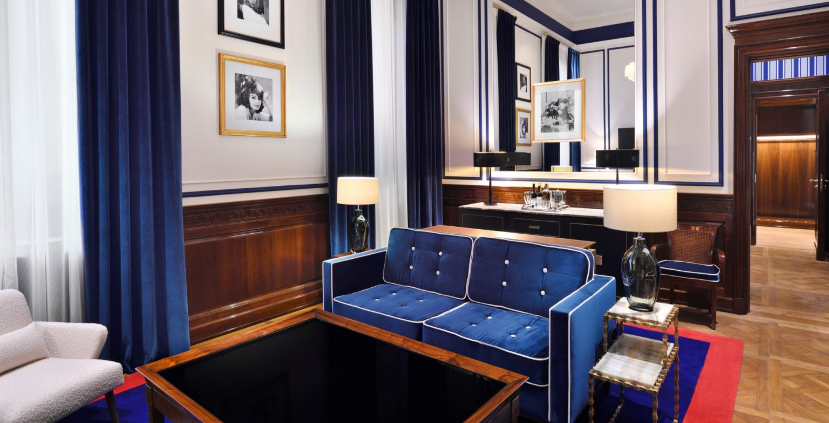
Located near the oldest Milanese gardens, Giardini Indro Montanelli, the hotel Casa Cipriani holds reminiscences of an English gentlemen’s club. The building features fifteen rooms and suites designed by the interior designer and architect Michele Bonan. The bright and spacious Executive Suite is a highly recommended room, styled with an interior pallet of royal blue and white; the space offers a stylish retreat with a grand view of the Indro Montanelli Gardens. The en-suite bathroom features a double vanity table, a walk-in rain shower, and elegant Cipollino marble finishes. All the furniture in the room has been custom-made with Italian fabrics to ensure a guest’s comfortability.
Bulgari Milan
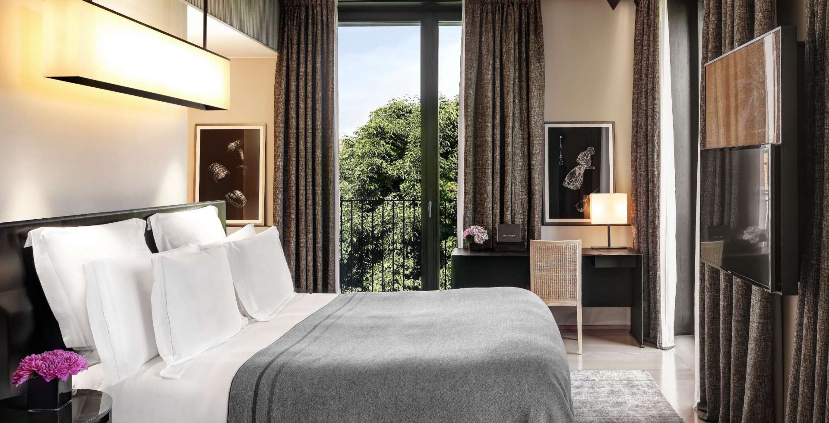
On a quiet private street between Via Montenapoleone and Via Della Spiga lies the elegantly 18th-century Bulgari Hotel. Situated in the cultural center of Milan, the five-star hotel showcases beautiful courtyards and green spaces amid the city. A guest might opt for the Premium Suite during their stay. The room is decorated in cream and wooden furnishing with floor-to-ceiling windows overlooking the hotel’s botanical gardens. A large walk-in wardrobe leads a guest to a separate king-sized bedroom with a master en-suite bathroom coated in luminous Navona travertine marble.
Hotel Principe di Savoia
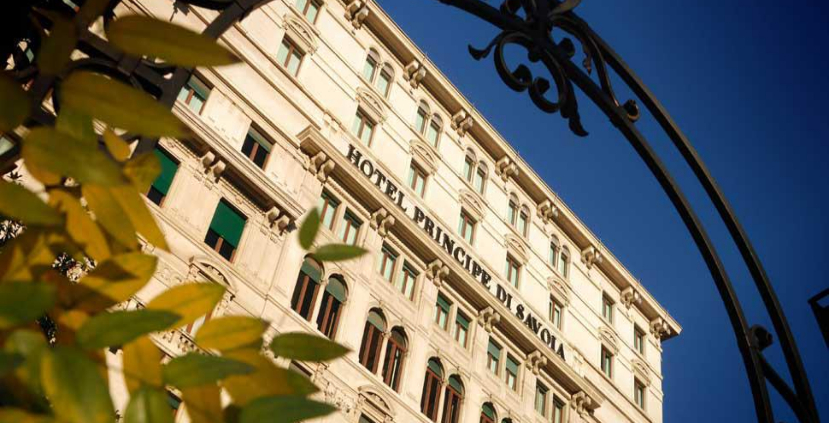
The Hotel Principe di Savoia has been given many names over the years but has always been a source of elegance and sophistication. In 1896, the property was known as Hotel du Nord. Then, the property was decorated in the Italian Art Nouveau style, known in Italy as ‘Liberty.’ Guests will be glad to hear that the hotel still holds its classic Liberty architecture that evokes the building’s original character and charm. A lavish room a traveler could indulge in is the Presidential Suite. The majestic space is an elevator ride up to the hotel’s tenth floor and sports a beautiful rooftop view of Milan. With three en suite bedrooms, a formal dining room, and an exclusive Pompeii-styled swimming pool, this stay is ideal for a romantic couple’s getaway.
Duomo Di Milano

Contrary to what one might think, the magnificent candoglia marble building, the Duomo Di Milano, is a cathedral and not a palace. While still primarily used for Roman Catholic worship, the basilica is arguably a symbol of the city’s remarkable creativity and ambition. The building’s interior is by no means less impressive, with colourful stain-glass windows showcasing scenes from the Bible that reflect ethereal light on the church’s mosaic floor. Travelers can also climb to the top of the cathedral and admire spectacular views of the city. The construction of the Duomo began in 1386 by the architect Giangaleazzo Visconti; however, the property’s construction was not fully completed until 1965. During those five centuries, many different architects, sculptors, and artists helped create the cathedral that stands before us today.
Visiting Leonardo Da Vinci’s The Last Supper
Perhaps one of the most famous and well-known paintings in the world, Leonardo Da Vinci’s The Last Supper, has been replicated to death, printed on t-shirts, bags, and keyrings. Yet, nothing can quite capture the emotional energy of the original painting that depicts Jesus and his twelve disciples. The subject of The Last Supper was a popular choice for the refectory walls of places of worship such as monasteries and convents in 15th-century Italy. It was thought that nuns and monks could eat their meals in the presence of Jesus’ final repast before his crucifixion. The painting was commissioned by Ludovico Sforza, the duke of Milan and Leonardo’s patron during his time in the city. It is thought that Da Vinci started the painting between 1495 and 1498 for the Dominican monastery Santa Maria Delle Grazie in Milan, where it still hangs today.
Sforzesco Castle

The Sforzesco Castle is a large red-brick fortress in the middle of the city. Dating back to the 15th century, the Castello was once one of the largest citadels in Europe. Now, it houses various artworks and cultural relics from Italian history. Guests can also wander around the various courtyards and soak in the building’s historic renaissance architecture. A gem for guests to visit is the beautiful Parco Sempione, known as Milan’s “green lung,” and is perhaps one of the most gorgeous parks in the city. For many centuries the Milanese have considered the castle a symbol of tyranny and foreign dictatorship. In fact, several times in the building’s long history have citizens of Milan attempted to demolish the property. However, only with the unification of the whole of Italy and its transformation into the city’s heart of culture has the Castello finally been cherished.
Forte

Forte has a wonderfully unique interior décor that matches its seafood cuisine. The restaurant feels like one has just dove into the ocean, with green and blue walls that swirl around guests; a guest is like a marine biologist on a research project. Forte’s walls are also accented by oceanic motifs such as black and white photographs of sea voyages from the past, metal anchors, and model boats dotted around the restaurant.
The restaurant prides itself on their sense of heritage, with family secrets about how to prepare and serve the most divine seafood cuisine. The owners also have a deep love and respect for the ocean, and they set sail across the Tyrrhenian Sea daily, searching for the best local fish to serve their guests. Options a guest can choose from are gnocchi with red shrimp, cherry tomatoes, and pecorino cheese or a succulent and fresh yellowfin tuna steak.
Bar Basso
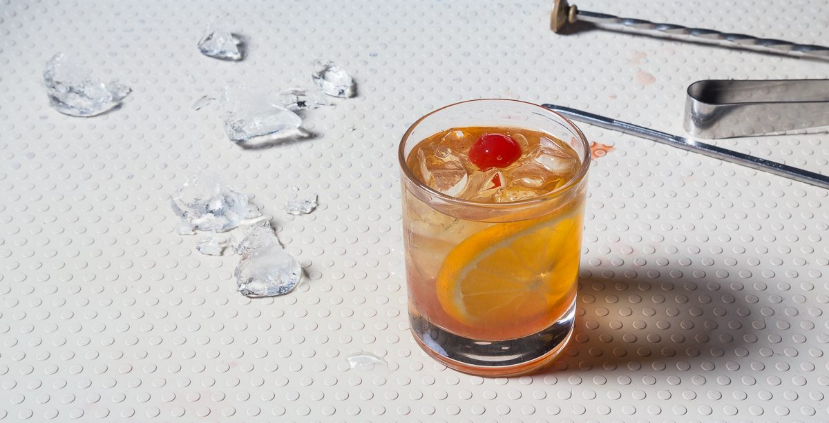
Bar Basso is a venue where Italian tradition and local charm meet in the middle. The space is ideal for cocktail connoisseurs who like to enjoy the calm and intimate feel of traditional bars that today have been replaced by rowdy nightclubesque spaces. Basso is allegedly the first-ever bar in Milan to introduce the “aperitif” or happy hour to locals. Before, cocktails could only be sipped at exclusive lounge bars in grand hotels, yet since 1947 cocktails have been shaken at this bar ever since. Now, the cocktail menu includes more than five hundred drinks for guests to choose from, from the classics such as the Bloody Mary to a Manhattan and newly mixed ones like the Rossini or the Mangia e Bevi a creamy hazelnut ice cream cocktail that guests have celebrated since the 60s. And, of course, let’s not forget Bar Basso’s trademark favourite, the Negroni Sbagliato.
Milan is a destination brimming with culture, from Milan Fashion Week, to housing the artistic phenomenon that is Leonardo Da Vinci’s The Last Supper, to the birthplace of the famous Negroni cocktail; Milan is a city that could possibly rival Rome. Yet, with all the excitement that lies in the city’s attractions, Milan is a peaceful place; with greenery and botanic gardens, it is a stress-free destination.

